Table of Contents
1. Introduction
In India’s thriving hospitality sector, hotel linen quality plays a crucial role in guest satisfaction and brand reputation. While thread count has long been considered the primary measure of linen quality, this focus can be misleading for both hoteliers and guests, especially in the diverse Indian market.
It’s worth noting that the textile industry in Tamil Nadu has been at the forefront of adopting renewable energy, particularly wind energy, for over 25 years. This pioneering effort was driven by the dual goals of reducing electricity costs and minimizing greenhouse gas emissions. According to the Tamil Nadu Spinning Mills Association (TASMA), its members have invested in wind energy across the state’s windy passes, setting a precedent for sustainable practices in the industry.
The truth is, numerous factors beyond thread count determine hotel linen quality, including its durability and comfort in hospitality settings. From the type of cotton used to the weaving technique employed, from finishing processes to ethical production methods, each element contributes to creating linens that truly enhance the guest experience in Indian hotels.
“In this comprehensive guide, we’ll explore the multifaceted aspects of hotel linen quality specific to the Indian context, debunk common myths, and provide insights into hotel linen quality that Indian hoteliers should consider when selecting linens for their establishments.
2. The Thread Count Myth: An Indian Perspective
Thread count, while important, shouldn’t be the sole factor in judging sheet quality, especially in the Indian market.
What is Thread Count?
Thread count refers to the number of threads woven into one square inch of fabric, counting both lengthwise (warp) and widthwise (weft) threads. For example, a 300 thread count sheet has 150 vertical threads and 150 horizontal threads per square inch.
The Misconception in India
In India, as globally, there’s a common belief that higher thread count automatically means better quality. This has led to a thread count race, with some manufacturers boasting counts of 600, 800, or even 1000+. However, this focus on numbers can be misleading for several reasons:
- Diminishing Returns: Beyond a certain point (usually around 400-600), increases in thread count offer minimal improvements in feel or durability.
- Manipulation: Some manufacturers use creative counting methods to inflate thread count without actually improving quality.
- Compromised Breathability: Extremely high thread counts can result in a denser fabric that’s less breathable – a significant concern in India’s predominantly warm climate.
- Neglect of Other Factors: Focusing solely on thread count ignores other crucial quality indicators like fiber type, weave, and finishing processes.
Expert Insight: “In the Indian context, thread count is just one aspect of linen quality. Factors like fiber quality, weave, and finishing processes often have a much greater impact on the overall performance and feel of the fabric, especially considering our diverse climate conditions.”
3. Fiber Quality: The Foundation of Great Linens in India
The quality of raw material used in making linens is crucial in determining the final product’s quality. In India, cotton is king, but not all cotton is created equal.
Types of Cotton in India
India, as one of the world’s largest cotton producers, offers a variety of cotton types that contribute to superior hotel linen quality:
- Suvin Cotton: Often called “White Gold,” Suvin is India’s premium, extra-long staple cotton. Grown in Tamil Nadu, it’s known for its silky texture, high strength, and durability.
- Shankar Cotton: A popular long-staple variety grown in several states, known for its strength and softness.
- DCH-32 (Dakshini): Another long-staple variety grown in South India, valued for its fineness and strength.
- J-34: A medium-staple variety widely grown in Northern India, offering a good balance of quality and affordability.
Other Natural Fibers Gaining Popularity in India
While cotton dominates the Indian hotel linen market, other natural fibers are gaining traction:
- Linen: Made from flax, linen is extremely durable and becomes softer with use. It’s highly absorbent and naturally antimicrobial, making it suitable for India’s varied climate.
- Bamboo: Bamboo fibers create soft, breathable fabrics with natural moisture-wicking properties. They’re also considered eco-friendly, though the processing can involve harsh chemicals.
Synthetic Blends in the Indian Market
Some Indian hotels opt for blends of natural and synthetic fibers to combine the best properties of each:
- Cotton-Polyester Blends: These are often more durable and wrinkle-resistant than 100% cotton, a practical choice for many Indian hotels.
- Microfiber: Made from extremely fine synthetic fibers, microfiber sheets can be very soft and durable but may not breathe as well as natural fibers – a consideration in India’s predominantly warm climate.
| Fiber Type | Pros | Cons |
|---|---|---|
| Suvin Cotton | Extremely soft, durable, improves with washing | Expensive, requires careful maintenance |
| Shankar Cotton | Strong, soft, good availability | More expensive than standard varieties |
| DCH-32 | Fine, strong, suitable for luxury linens | Costlier than medium-staple varieties |
| J-34 | Affordable, widely available | Less luxurious feel than long-staple varieties |
| Linen | Very durable, cooling, antimicrobial | Wrinkles easily, can feel rough initially |
| Bamboo | Soft, moisture-wicking, eco-friendly | Can be expensive, processing may not be environmentally friendly |
| Cotton-Polyester Blend | Durable, wrinkle-resistant, cost-effective | May not feel as luxurious, less breathable |
Expert Tip: “For high-end properties in India, we often recommend Suvin or DCH-32 cotton for their superior feel and durability. For mid-range hotels, Shankar cotton or a carefully chosen blend can offer a good balance of comfort and value.”
When selecting linens, consider the specific needs of your hotel and its location in India. Luxury properties might opt for Suvin cotton for its premium feel, while hotels in humid coastal areas might prefer moisture-wicking bamboo or linen blends.
4. Weave Matters: Understanding Different Fabric Constructions for Indian Hotels
The way fibers are woven together significantly impacts the feel, appearance, and performance of the final fabric. Different weaves create distinct textures and properties, catering to various preferences and needs in the Indian hospitality industry.
Common Weave Types in Indian Hotel Linens
Percale
- Characteristics: Crisp, cool feel; matte finish
- Structure: One-over-one-under weave
- Best for: Hot and humid Indian climates; those who prefer a cooler sleeping surface
- Thread count range: Typically 180-300
- Indian context: Popular choice for many hotels across India due to its breathability
Sateen
- Characteristics: Silky smooth feel; slight sheen
- Structure: Three-over-one-under or four-over-one-under weave
- Best for: Luxury hotels; those who prefer a luxurious, smooth feel
- Thread count range: Often 300-600
- Indian context: Favored in high-end hotels and cooler regions like hill stations
Twill
- Characteristics: Distinctive diagonal pattern; durable and drapes well
- Structure: Over-two-under-one or over-three-under-one weave
- Best for: Environments where durability is key, such as frequently washed items
- Thread count range: Varies widely
- Indian context: Often used in towels and bathrobes in Indian hotels
Dobby
- Characteristics: Textured pattern; durable
- Structure: Uses a special loom to create patterns
- Best for: Adding visual interest without compromising on durability
- Indian context: Gaining popularity in mid-range to luxury Indian hotels for its unique look and feel
How Weave Affects Feel and Durability in Indian Conditions
- Percale: The simple, tight weave of percale creates a fabric that’s lightweight and breathable, making it ideal for India’s hot and humid climate. It’s less prone to pilling but may wrinkle more easily than other weaves.
- Sateen: The unique structure of sateen weave exposes more thread surface, creating a smoother feel and subtle luster. However, this can make it more prone to snagging and less durable than percale. In India, it’s often reserved for luxury suites or hotels in cooler regions.
- Twill: The diagonal pattern of twill weave creates a fabric that’s strong and resistant to wrinkles. It’s often used in higher-traffic items like towels and bathrobes, standing up well to frequent washing in Indian hotel laundries.
- Dobby: The textured weave of dobby fabrics offers a good balance of visual appeal and durability, making it a versatile choice for Indian hotels looking to add a touch of elegance without compromising on practicality.
| Weave Type | Feel | Durability | Best Use Case in Indian Hotels |
|---|---|---|---|
| Percale | Crisp, cool | Good | Summer bedding, hot climates across India |
| Sateen | Smooth, silky | Moderate | Luxury hotels, cooler regions like hill stations |
| Twill | Soft, textured | Excellent | High-traffic items, towels, year-round use |
| Dobby | Textured, interesting | Good to Excellent | Mid-range to luxury hotels, adding visual appeal |
Industry Insight: Priya Desai, Head of Housekeeping at a 5-star hotel in Mumbai, shares, “We use percale weave sheets in most of our rooms because they stay crisp and cool, which our guests love, especially during the hot and humid Mumbai summers. For our luxury suites, we offer a sateen option for those who prefer a silkier feel.”
When choosing a weave, consider your hotel’s location, climate, target market, and the balance between luxury feel and durability. A mix of weaves for different items can provide a well-rounded linen selection that meets various needs in the diverse Indian hospitality landscape.
5. Finishing Touches: The Impact of Processing on Indian Hotel Linens
The journey from raw fiber to finished linen involves several processing steps. These finishing touches can significantly enhance the fabric’s appearance, feel, and performance. Understanding these processes can help Indian hoteliers make informed decisions about linen quality.
Key Finishing Processes that Impacts Hotel Linen Quality
Mercerization
- Process: Treating cotton fibers with sodium hydroxide
- Benefits:
- Increases luster and smoothness
- Improves dye absorption for richer colors
- Enhances strength and durability
- Indian context: Widely used to enhance hotel linen quality in premium Indian establishments, especially those made from local long-staple cotton varieties
Singeing
- Process: Burning off protruding fibers from the fabric surface
- Benefits:
- Creates a smoother surface
- Reduces pilling and lint
- Improves overall appearance
- Indian context: Essential for a polished look, particularly important in high-end Indian hotels
Calendering
- Process: Passing fabric through heated rollers
- Benefits:
- Smooths the surface
- Can create a glossy finish if desired
- Improves fabric density
- Indian context: Used to create the crisp, smooth finish expected in high hotel linen quality standards typical of luxury Indian accommodations.
Sanforization
- Process: Pre-shrinking fabric to minimize future shrinkage
- Benefits:
- Ensures dimensional stability
- Reduces shrinkage after washing
- Indian context: Particularly important for cotton linens in India, where frequent washing in hot water is common due to climate and hygiene requirements
Anti-microbial Treatments
- Process: Applying chemicals to inhibit growth of bacteria and fungi
- Benefits:
- Improves hygiene
- Can help linens stay fresh longer
- Indian context: Gaining popularity in Indian hotels, especially in humid regions where microbial growth is a concern
Impact on Final Product in the Indian Hotel Industry
These finishing processes can have a significant impact on hotel linen quality and performance in India’s hospitality sector.
- Improved Appearance: Processes like singeing and calendering create a smoother, more polished look that guests associate with luxury, crucial for India’s growing high-end hotel market.
- Enhanced Durability: Mercerization and proper sanforization can extend the life of linens by improving strength and reducing wear from washing and use – essential in India’s cost-conscious hotel industry.
- Better Performance: Anti-microbial treatments can improve hygiene and freshness, addressing concerns specific to India’s climate and meeting the expectations of both domestic and international guests.
- Ease of Care: Many finishing processes can make linens easier to care for, reducing wrinkles and maintaining appearance through multiple washes – a key consideration for efficient hotel operations in India.
| Finishing Process | Primary Benefit | Impact on Cost | Importance for Indian Luxury Hotels |
|---|---|---|---|
| Mercerization | Strength & Luster | Moderate Increase | High |
| Singeing | Smooth Surface | Minor Increase | High |
| Calendering | Polished Appearance | Minor Increase | Moderate to High |
| Sanforization | Dimensional Stability | Minor Increase | High |
| Anti-microbial Treatments | Hygiene & Freshness | Moderate Increase | High in humid regions |
Expert Opinion: “Finishing processes are crucial in transforming raw fabric into high-performance hotel linens suitable for India’s diverse climate conditions. For instance, anti-microbial treatments are gaining importance, especially in coastal and humid regions, to ensure linens remain fresh and hygienic between guest stays.”
When evaluating linens for your Indian hotel, ask suppliers about the finishing processes used. High-quality linens often undergo multiple finishing steps to achieve the best possible performance and appearance, tailored to the unique demands of the Indian hospitality industry.
6. Durability Factors: What Makes Hotel Linens Last in India
Durability is a critical factor in hotel linens, directly impacting both guest satisfaction and the hotel’s bottom line. In the Indian context, where cost-effectiveness is often a key consideration, understanding the factors that contribute to linen longevity can help hoteliers make smart investments.
Key Durability Factors Affecting Hotel Linen Quality in India
Fiber Length (Staple)
- Long-staple fibers (1⅛ inches or longer) create stronger, smoother yarns
- Longer fibers mean fewer exposed ends, reducing pilling and wear
- Indian context: Suvin cotton, with its extra-long staples, is prized for durability in premium Indian hotels
Ply
- Refers to the number of yarns twisted together to create a single thread
- Single-ply fabrics are lighter and often smoother
- Two-ply (or multi-ply) fabrics are generally stronger and more durable
- Indian context: Multi-ply fabrics are often preferred for their durability, especially in budget and mid-range Indian hotels
Weight (GSM – Grams per Square Meter)
- Measures the density of the fabric
- For sheets in India:
- Lightweight: 130-180 GSM (suitable for hot, humid regions)
- Medium weight: 180-230 GSM (popular in most Indian hotels)
- Heavy weight: 230+ GSM (used in luxury hotels or cooler regions)
- For towels in India:
- Lightweight: 300-400 GSM (quick-drying, suitable for humid areas)
- Medium weight: 400-600 GSM (most common in Indian hotels)
- Luxury weight: 600-900 GSM (used in high-end hotels)
Yarn Strength
- Determined by fiber quality, spinning technique, and ply
- Stronger yarns resist breaking and unraveling, extending linen life
- Indian context: Important consideration given the frequent washing and high temperatures in many Indian laundry operations
Weave Tightness
- Tighter weaves generally create more durable fabrics
- However, extremely tight weaves may reduce breathability
- Indian context: A balance is crucial, especially in hot and humid regions where breathability is important
Industry Expert Insight: A consultant for Indian Luxury Hotels, advises, “When assessing linen durability for Indian hotels, look beyond just the thread count. A 300 thread count sheet made with long-staple Indian cotton like Suvin and a balanced weave can outlast a 600 thread count sheet made with inferior, short-staple fibers.”
Importance of Proper Care and Maintenance of Hotel Linens
Even the highest quality linens will degrade quickly without proper care. Key maintenance factors in the Indian context include:
Washing Protocols
- Use appropriate water temperature and mild detergents suitable for hard water conditions common in many parts of India
- Avoid overloading washing machines
- Separate light and dark colors to prevent color bleeding, a common issue with local dyes
Drying Practices
- Use appropriate heat settings, considering the high heat and humidity in many Indian regions
- Remove items promptly to reduce wrinkles
- Consider line-drying for some items to extend lifespan and save energy, a practice still common in many Indian hotels
Storage
- Store in cool, dry places away from direct sunlight, crucial in India’s hot and often humid climate
- Allow proper air circulation to prevent mildew, a significant concern in monsoon seasons
Rotation
- Regularly rotate linens to distribute wear evenly
- Have enough stock to allow proper rotation, considering the high occupancy rates in many Indian tourist destinations
Staff Training
- Ensure all staff handling linens are trained in proper care techniques, adapting international best practices to local conditions
| Durability Factor | Impact on Longevity | Considerations for Indian Hotels |
|---|---|---|
| Fiber Length | High | Longer fibers (e.g., Suvin cotton) generally mean greater durability |
| Ply | Moderate | Multi-ply can increase strength, important for frequent washing |
| Weight (GSM) | Moderate | Balance between durability and breathability crucial in India’s climate |
| Yarn Strength | High | Affects resistance to wear and tear from frequent washing |
| Weave Tightness | Moderate | Tighter weaves are often more durable but may be less breathable |
| Care Practices | Very High | Proper care significantly extends linen lifespan, crucial in cost-conscious Indian market |
7. Comfort Considerations: What Indian Hotel Guests Really Feel
While durability is crucial for hotel operations, guest comfort is paramount for satisfaction and repeat business. In India, where hospitality is deeply ingrained in the culture, the feel of linens against the skin can significantly impact a guest’s experience. Let’s explore the key comfort factors that contribute to hotel linen quality, tailored to the Indian hospitality context.
Softness
Softness is often the first thing guests notice about bed linens. In India, factors influencing softness include:
- Fiber Type: Long-staple Indian cotton varieties like Suvin are known for their exceptional softness.
- Weave: Sateen weaves typically feel softer than percale initially, though percale often softens beautifully with use.
- Finishing Processes: Treatments like mercerization, common in Indian textile manufacturing, can enhance softness.
- Thread Count: Up to a point, higher thread counts can increase softness, but this should be balanced with other factors.
Breathability
In India’s predominantly warm climate, breathable fabrics that help regulate body temperature are crucial for a comfortable night’s sleep.
- Natural fibers like cotton and linen are generally more breathable than synthetics, aligning well with India’s strong cotton industry.
- Looser weaves (like percale) tend to be more breathable than tighter weaves, making them popular in many Indian hotels.
- Lighter weight fabrics are typically more breathable than heavier ones, an important consideration in hot and humid regions.
Moisture-Wicking Properties
Fabrics that effectively wick away moisture help guests stay dry and comfortable, particularly important in India’s diverse climate zones.
- Natural fibers like cotton and linen have good moisture-wicking properties and are widely available in India.
- Some synthetic blends are engineered for enhanced moisture management, gaining popularity in certain Indian hotel sectors.
- Bamboo fabrics, increasingly available in India, are known for excellent moisture-wicking capabilities.
Temperature Regulation
Linens that help maintain a consistent body temperature contribute to better sleep quality, a key consideration given India’s varied climate.
- Natural fibers generally regulate temperature better than synthetics, aligning with India’s strong natural fiber industry.
- The weight and weave of the fabric play a crucial role in temperature control, with options varying for different Indian climatic zones.
Expert Opinion: “In India’s diverse climate conditions, the right linens can significantly impact sleep quality. Breathable, moisture-wicking fabrics that help regulate body temperature can lead to deeper, more restful sleep for hotel guests, whether in the humid coastal regions or cooler hill stations.”
Texture
The texture of linens can significantly impact comfort and perceived luxury, with preferences varying across different guest demographics in India.
- Some guests prefer the crisp feel of percale, reminiscent of traditional Indian cotton textiles.
- Others enjoy the smooth glide of sateen, often associated with luxury experiences.
- Jacquard weaves can add subtle texture and visual interest, appealing to guests looking for a touch of elegance.
| Comfort Factor | Indian Cotton | Linen | Bamboo | Microfiber |
|---|---|---|---|---|
| Softness | High | Moderate (improves with use) | Very High | High |
| Breathability | Excellent | Excellent | Good | Moderate |
| Moisture-wicking | Good | Excellent | Excellent | Moderate |
| Temperature Regulation | Good | Excellent | Excellent | Poor to Moderate |
| Typical Texture | Smooth to crisp | Slightly Rough to Smooth | Very Smooth | Very Smooth |
Balancing Comfort Factors for Indian Hotels
When selecting linens for Indian hotels, consider:
- Regional Climate: In hot, humid coastal areas, prioritize breathability and moisture-wicking properties. In cooler hill stations, focus on temperature regulation and warmth.
- Guest Demographics: Luxury hotels might prioritize high-end, ultra-soft fabrics, while business hotels might focus on durability and easy care.
- Cultural Preferences: Some guests may prefer traditional textures and materials, while others expect international luxury standards.
- Allergies: Some guests may be sensitive to certain fibers or treatments, necessitating hypoallergenic options.
By carefully considering these factors, Indian hoteliers can select linens that not only meet international standards of quality but also cater to the unique preferences and needs of their diverse guest base.
8. Sustainability, Ethical Production, and Hotel Linen Quality in India’s Hospitality Industry
In today’s environmentally conscious world, sustainability and ethical production are becoming increasingly important factors in hotel linen quality and selection, even in the cost-sensitive Indian market. Many guests, especially international travelers and younger demographics, value eco-friendly practices. Indian hotels can enhance their brand image and appeal to these conscious consumers by prioritizing sustainable and ethically produced linens.
Organic Certifications Relevant to India
Organic certifications ensure that the fibers used in linens are grown without harmful pesticides or synthetic fertilizers. In India, relevant certifications include:
- Global Organic Textile Standard (GOTS): The leading worldwide standard for organic fibers, covering both ecological and social criteria. Many Indian manufacturers are GOTS certified.
Benefits of organic linens for Indian hotels:
- Reduced environmental impact, aligning with India’s growing focus on sustainability
- Potentially softer and more durable fabrics
- Appeal to eco-conscious international and domestic guests
Fair Trade Practices in India
Fair Trade certifications ensure that workers involved in linen production receive fair wages and work in safe conditions. In India, relevant certifications include:
- Fairtrade International: Sets standards for fair wages and working conditions.
- Fair Trade Forum-India: A national network promoting fair trade practices within India.
Benefits of Fair Trade linens for Indian hotels:
- Support for ethical labor practices, a growing concern in India’s textile industry
- Potential for higher quality due to better working conditions
- Positive brand association for the hotel, especially among international guests
Industry Expert Insight: A sustainability Consultant for the Indian Hospitality Industry, notes, “Indian hotels that invest in certified organic and fair trade linens not only contribute to environmental and social sustainability but also often see increased guest satisfaction and loyalty from eco-conscious travelers, both domestic and international.”
Eco-Friendly Manufacturing Processes in India
Beyond the raw materials, the manufacturing process itself can have a significant environmental impact. In India, where water scarcity and energy efficiency are growing concerns, eco-friendly processes are gaining importance.
Key considerations for Indian hotels:
- Water Usage: Look for manufacturers using water-efficient processes or closed-loop water systems, crucial in water-stressed regions of India.
- Energy Consumption: Some Indian manufacturers are adopting renewable energy sources or implementing energy-efficient facilities.
- Chemical Use: Seek out producers using low-impact dyes and finishing chemicals, aligned with India’s growing organic textile sector.
- Waste Management: Responsible manufacturers in India have systems in place to minimize and properly dispose of waste, adhering to increasingly strict environmental regulations.
Clean Energy Adoption in Spinning Mills
While discussing the quality of linens, it’s important to consider the energy sources used in their production. Many spinning mills in Tamil Nadu have been investing in renewable energy, particularly wind power, to reduce both costs and environmental impact. For instance, L.S. Spinning Mills in the Theni district owns nine windmills across various locations, with a combined capacity of 6.05 MW. This trend towards clean energy not only affects the cost structure of linen production but also aligns with growing consumer preferences for sustainably produced textiles.
Read more: Harnessing clean energy for Tamil Nadu’s spinning mills is not as easy as it seems
Sustainable Fibers in the Indian Context
Some fibers are inherently more sustainable and well-suited to India’s agricultural and manufacturing landscape:
- Organic Cotton: India is the world’s largest producer of organic cotton, making this a readily available and sustainable choice.
- Linen: While not as common as cotton, linen production is growing in India and offers excellent sustainability credentials.
- Bamboo: Fast-growing and requiring little water, bamboo is gaining popularity in India, though processing methods vary in their eco-friendliness.
- Khadi: A hand-spun, hand-woven fabric traditionally made from cotton, khadi represents a uniquely Indian approach to sustainable textile production.
| Fiber Type | Sustainability Score | Biodegradability | Water Usage | Pesticide Usage | Relevance to Indian Market |
|---|---|---|---|---|---|
| Organic Cotton | High | Excellent | Moderate | None | Very High (Major Producer) |
| Conventional Cotton | Low | Excellent | High | High | Very High (Traditional Crop) |
| Linen | Very High | Excellent | Low | Low | Moderate (Growing Sector) |
| Bamboo | Moderate | Good | Low | Low | High (Increasing Popularity) |
| Khadi | High | Excellent | Low | Low to None | High (Traditional, Gaining Modern Appeal) |
9. Practical Tips for Indian Hoteliers
Selecting the right linens for your hotel in India involves balancing multiple factors including quality, guest comfort, durability, cost, and sustainability. Here are some practical tips to help Indian hoteliers make informed decisions about their linen purchases.
How to Assess Linen Quality in the Indian Market
- Feel the Fabric:
- Touch the linens to assess softness and texture.
- Look for a smooth, even surface without obvious flawss.
- Check the Label:
- Look for fiber content, thread count, and any Indian or international certifications.
- Be wary of inflated thread counts or vague descriptions.
- Examine the Stitching:
- Quality linens should have tight, even stitches.
- Check for reinforced corners and edges on sheets, especially important given the frequent washing in Indian hotels.
- Test for Pilling:
- Rub a small area of the fabric between your thumb and forefinger.
- Quality fabrics should resist pilling, crucial for maintaining appearance over time.
- Consider Weight:
- In India’s varied climate, the right weight is crucial. Heavier isn’t always better, especially in hot regions.
- Request Samples:
- Most Indian suppliers will provide samples for testing.
- Wash and use the samples to assess performance under local conditions.
Balancing Hotel Linen Quality and Cost for Indian Hospitality
- Calculate Total Cost of Ownership:
- Consider not just the purchase price, but also lifespan and replacement frequency.
- Factor in care and maintenance costs, including water and energy usage in India’s context.
- Prioritize High-Impact Items:
- Invest more in items that directly touch guests (sheets, pillowcases, towels).
- Consider more budget-friendly options for less visible items.
- Bulk Purchasing:
- Negotiate better rates for larger orders, a common practice in India.
- Consider partnering with other hotels or chains for group purchasing power.
- Tiered Quality Levels:
- Use higher quality linens in premium rooms or suites.
- Maintain a good baseline quality for all rooms, crucial for guest satisfaction across all hotel categories.
Expert Advice: Priya Sharma, Procurement Manager for a leading Indian hotel chain, suggests, “In the Indian market, don’t just focus on the initial cost. Consider the total cost of ownership, including how long the linens will last in our harsh washing conditions and varied climate. Sometimes, investing a bit more upfront in quality Indian cotton can lead to significant savings in the long run.”
Importance of Supplier Relationships in India
- Research Potential Suppliers:
- Look for suppliers with experience in the Indian hospitality industry.
- Check references and reviews from other Indian hotels.
- Communication:
- Clearly communicate your needs and expectations, considering any unique requirements for your hotel’s location or guest profile.
- Be open about your budget constraints, a key consideration in the competitive Indian market.
- Customization:
- Work with suppliers who can offer customized solutions to meet the diverse needs of Indian hotels.
- Consider co-developing products that meet your specific needs, leveraging India’s strong textile manufacturing capabilities.
- Ongoing Support:
- Choose suppliers who offer good after-sales support, crucial for maintaining quality over time.
- Look for those who can provide guidance on care and maintenance specific to Indian conditions.
- Reliability:
- Ensure the supplier can consistently meet your demand, even during peak tourist seasons.
- Consider their ability to handle rush orders or unexpected needs, important in India’s dynamic hospitality sector.
10. Conclusion
Understanding hotel linen quality in the Indian context goes far beyond simply looking at thread count. From local cotton varieties and weaves to finishing processes and sustainability considerations, numerous factors contribute to creating linens that enhance the guest experience and provide value for Indian hotels.
Key takeaways for Indian hoteliers:
- Look beyond thread count when assessing hotel linen quality, considering factors particularly relevant to India’s climate and guest expectations.
- Consider the specific needs of your hotel and guests when selecting linens, taking into account regional climate variations and diverse guest profiles.
- Balance durability, comfort, and cost-effectiveness in your linen choices, crucial in India’s competitive hospitality market.
- Don’t overlook the importance of proper care and maintenance in extending linen lifespan, adapting international best practices to local conditions.
- Consider sustainability and ethical production as increasingly important factors, aligning with growing environmental awareness in India.
By taking a holistic approach to linen selection and management, Indian hotels can improve guest satisfaction, optimize operational efficiency, and potentially reduce long-term costs. Remember, quality linens are an investment in your guests’ comfort and your hotel’s reputation.
As India’s hospitality industry continues to evolve and compete on a global stage, staying informed about advancements in textile technology and changing guest preferences will be crucial. By prioritizing linen quality and making informed decisions, hotels can ensure they’re providing the best possible sleep experience for their guests, night after night, while also contributing to the sustainable growth of India’s hospitality sector.

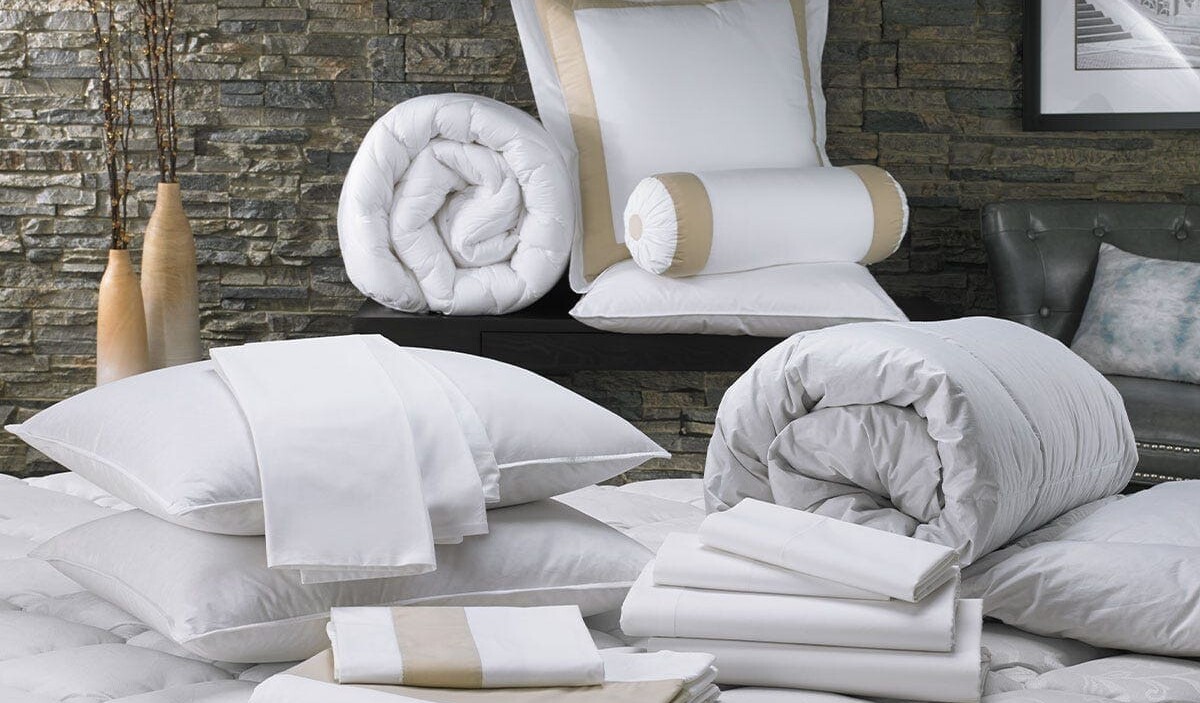
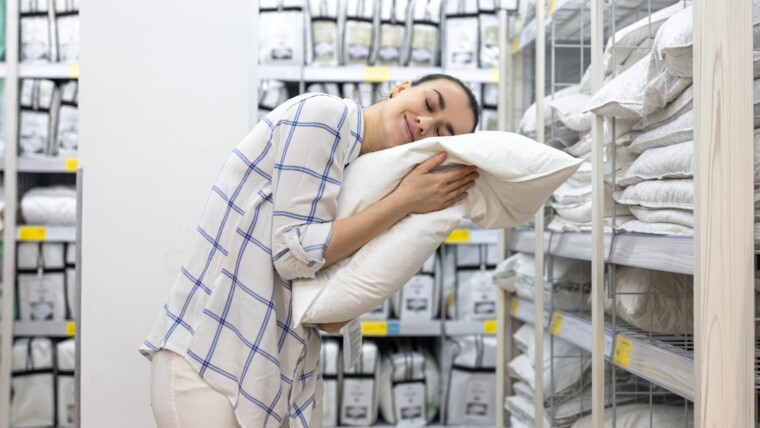
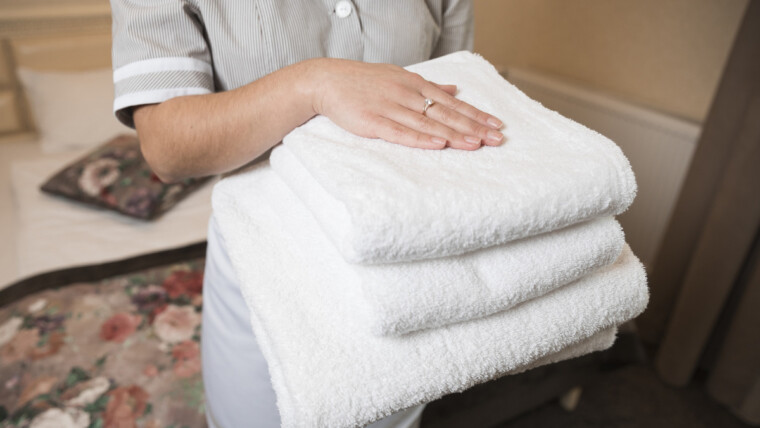
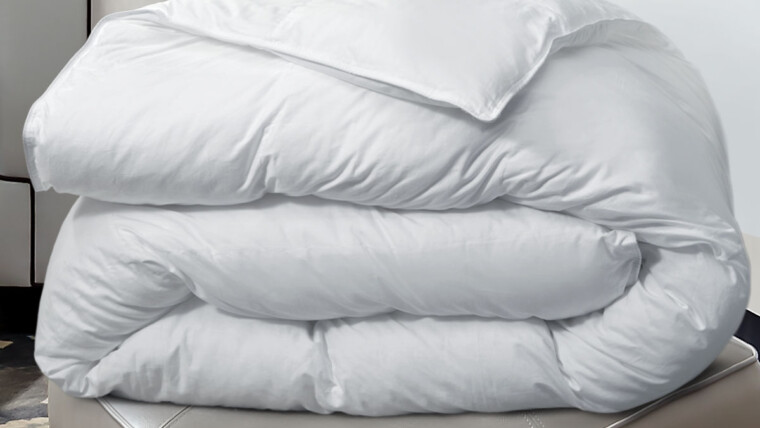
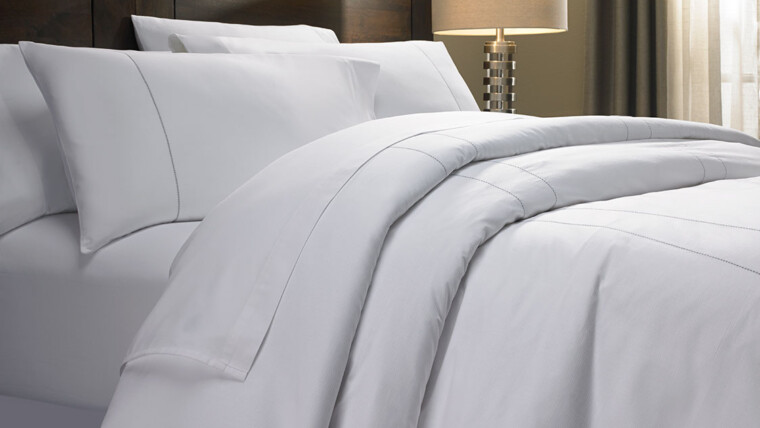

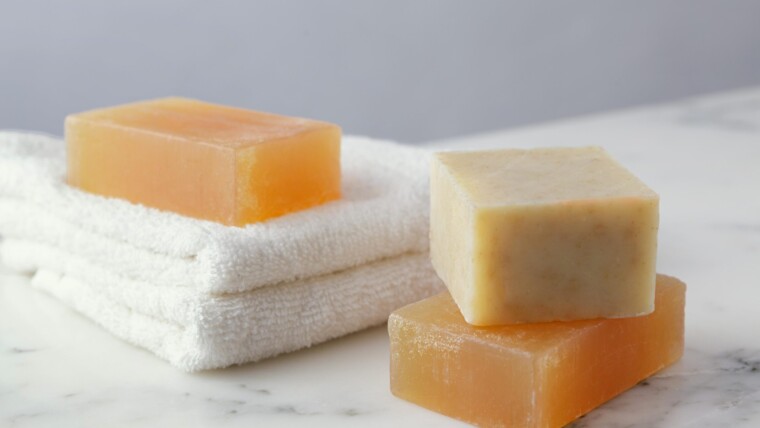
Essential Diversey Chemicals: A Guide for R1 to R9 TASKI Series
How to Respond to Guest Reviews with 10 Samples
Top OTAs in India: Complete 2024 Guide for Hoteliers
Different Types of Paper Napkins for Restaurants
Guest Reviews: The Hidden Force Behind Bookings